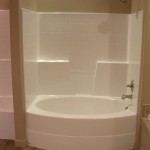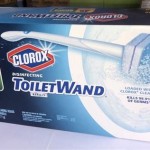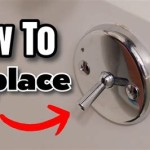Best Cleaners for Bathtub Scum Removal
Bathtub scum, also known as soap scum, is a persistent nuisance in many bathrooms. It forms as a result of the reaction between hard water minerals, soap products, body oils, and dead skin cells. This unsightly residue can cling tenaciously to bathtub surfaces, making it challenging to remove. Selecting the most appropriate cleaner is essential for effectively eliminating bathtub scum without damaging the tub's finish or posing health risks.
Several factors influence the effectiveness of a bathtub cleaner. These include the type of scum present (mild vs. heavy buildup), the material of the bathtub (acrylic, fiberglass, porcelain, etc.), and the user's sensitivity to chemicals. Understanding these factors is key to choosing the best cleaner for a particular situation. Harsh chemicals may be effective for heavy scum removal, but they can damage certain bathtub materials or irritate sensitive skin. Gentler options may require more scrubbing or repeat applications but are less likely to cause damage or adverse reactions.
Identifying Bathtub Scum and Its Composition
Before selecting a cleaner, it's important to understand the composition of bathtub scum. Soap scum is primarily composed of calcium and magnesium salts, which are present in hard water. When these minerals react with the fatty acids in soap, a hard, insoluble residue is formed. This residue adheres to the bathtub surface and can accumulate over time, creating a thick, unsightly layer.
The severity of soap scum buildup depends on several factors, including the hardness of the water, the frequency of bathtub use, and the type of soap used. Hard water contains a high concentration of minerals, which increases the likelihood of soap scum formation. Similarly, frequent bathtub use and the use of soap bars, which typically contain more fatty acids than liquid soaps, can exacerbate the problem.
Differentiating between soap scum and other types of bathroom grime can help guide the cleaning process. Soap scum typically presents as a dull, white or grayish film that is difficult to remove with water alone. Other types of bathroom grime, such as mildew and hard water stains, may require different cleaning strategies. Mildew, recognizable by its dark, speckled appearance and musty odor, requires cleaners with antifungal properties. Hard water stains, characterized by their chalky white appearance, may require acidic cleaners to dissolve the mineral deposits.
Evaluating Different Types of Bathtub Cleaners
A wide range of bathtub cleaners is available on the market, each with its own advantages and disadvantages. These cleaners can be broadly categorized into commercial cleaners, natural cleaners, and DIY solutions. Commercial cleaners are specifically formulated for bathroom cleaning and typically contain a blend of surfactants, solvents, and disinfectants. Natural cleaners, such as vinegar and baking soda, offer a gentler alternative to commercial options. DIY solutions involve combining readily available household ingredients to create custom cleaning mixtures.
Commercial cleaners are generally effective at removing stubborn bathtub scum and stains. However, they often contain harsh chemicals that can irritate the skin and respiratory system. It's important to carefully read the product label and follow the manufacturer's instructions when using commercial cleaners. Adequate ventilation is crucial to prevent inhaling harmful fumes, and the use of gloves is recommended to protect the skin.
Natural cleaners offer a safer and more environmentally friendly alternative to commercial options. Vinegar, a mild acid, can dissolve soap scum and hard water stains. Baking soda, a mild abrasive, can help scrub away stubborn residue without scratching the bathtub surface. Combining vinegar and baking soda creates a fizzing reaction that can further loosen soap scum. However, natural cleaners may require more scrubbing and repeat applications to achieve the desired results.
DIY solutions allow for customization and flexibility. For example, a paste of baking soda and water can be applied to soap scum and left to sit for several minutes before scrubbing. A mixture of vinegar and dish soap can be sprayed onto the bathtub surface and left to soak before rinsing. DIY solutions can be a cost-effective and environmentally friendly way to clean bathtub scum, but it's important to research and test different recipes to find one that works effectively without damaging the bathtub surface.
Factors to Consider When Choosing a Bathtub Cleaner
Selecting the appropriate bathtub cleaner requires careful consideration of several factors. The type of bathtub material is a primary concern. Acrylic and fiberglass bathtubs are susceptible to scratching and damage from harsh chemicals, while porcelain bathtubs are more durable and can withstand stronger cleaners. Always consult the manufacturer's recommendations before using any cleaning product on a particular bathtub material.
The severity of soap scum buildup is another important factor. Mild soap scum may only require a gentle cleaner and light scrubbing, while heavy buildup may necessitate a more aggressive cleaner and more intensive scrubbing. For heavy buildup, it may be necessary to pre-treat the scum with a cleaner and allow it to soak for an extended period before scrubbing.
User sensitivity to chemicals is a crucial consideration. Individuals with allergies, asthma, or other respiratory conditions should avoid using cleaners that contain strong fumes or irritating chemicals. Natural cleaners and DIY solutions are often a better choice for individuals with sensitivities. It's always advisable to test a small, inconspicuous area of the bathtub surface with the cleaner before applying it to the entire tub. This will help ensure that the cleaner does not damage the finish or cause any discoloration.
The environmental impact of the cleaner is also a growing concern for many consumers. Opting for biodegradable and phosphate-free cleaners can help minimize the environmental impact of bathroom cleaning. Natural cleaners are generally more environmentally friendly than commercial cleaners, as they are made from renewable resources and do not contain harsh chemicals.
In addition to the type of cleaner used, the cleaning tools employed can also impact the effectiveness of the cleaning process. Non-abrasive sponges, microfiber cloths, and soft-bristled brushes are ideal for cleaning bathtubs without scratching the surface. Avoid using abrasive scrub pads or steel wool, as these can damage the finish.
Proper ventilation is essential when cleaning bathtubs, especially when using commercial cleaners. Open windows and doors or use a bathroom exhaust fan to ensure adequate airflow. This will help prevent the buildup of fumes and reduce the risk of respiratory irritation.
Always rinse the bathtub thoroughly with clean water after cleaning to remove any remaining cleaner residue. This will help prevent the formation of new soap scum and ensure that the bathtub is safe to use.
Regular cleaning is key to preventing the buildup of bathtub scum. Cleaning the bathtub after each use can help prevent soap scum from hardening and becoming difficult to remove. A quick wipe-down with a clean cloth or sponge is often sufficient to remove any residual soap and water.
Using liquid soaps instead of bar soaps can also help reduce the formation of soap scum. Liquid soaps typically contain fewer fatty acids than bar soaps, which reduces the amount of residue that reacts with hard water minerals.
Consider using a water softener to reduce the hardness of the water. Water softeners remove calcium and magnesium from the water, which reduces the likelihood of soap scum formation. While water softeners can be a significant investment, they can also provide numerous benefits, including cleaner laundry, reduced scale buildup in pipes and appliances, and softer skin and hair.
By carefully considering the factors outlined above and selecting the appropriate cleaner and cleaning tools, it's possible to effectively remove bathtub scum and maintain a clean and healthy bathroom environment. Consistent cleaning habits and preventative measures can further minimize the buildup of soap scum and reduce the need for harsh chemicals.

2 Ingredient Magic Banish Soap Scum Effortlessly

10 Best Shower Cleaners Of 2024 Reviewed

Easy Diy Soap Scum And Bath Tub Cleaner

How To Clean Soap Scum And Stains In A Bathtub

The Best Soap Scum Remover Diy Picture Tutorial

Rejuvenate Soap Scum Remover Scrub Free 32 Fl Oz Unscented Shower And Bathtub Cleaner In The Cleaners Department At Com

Reviews For Rejuvenate 128 Oz Soap Scum Remover Pg 1 The Home Depot

How To Make Ugly Soap Scum Disappear Everyday Skate

How To Clean A Bathtub The Right Way In 9 Easy Steps
What Is The Best Cleaner Or De To Remove Years Of Built Up Hard Soap Scum In A Bathtub Quora








